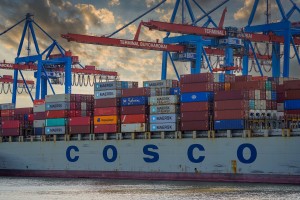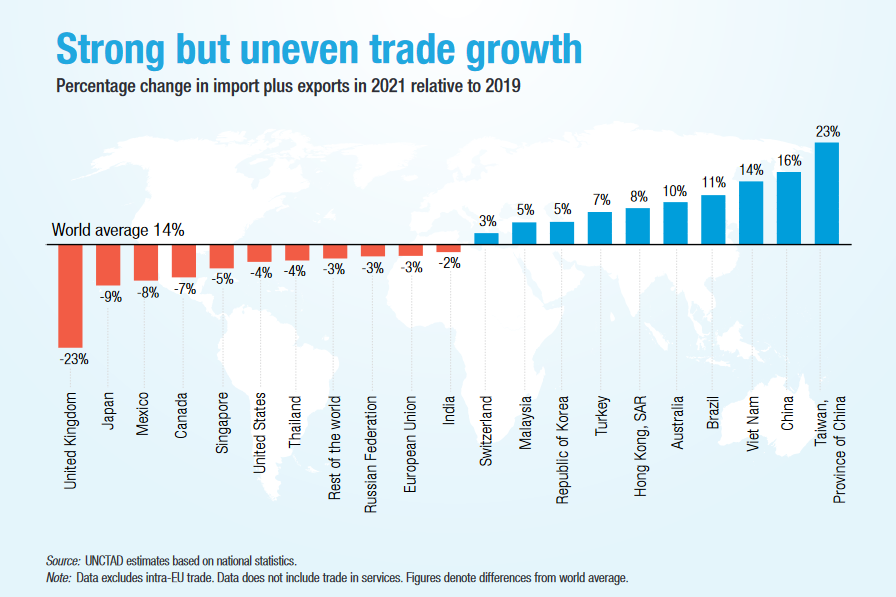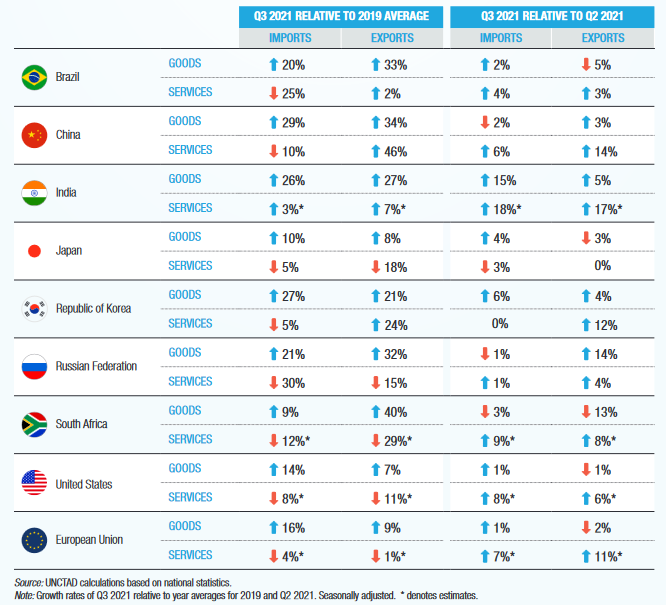
The forecast for 2022, however, remains very uncertain
Geneva: Global trade is expected to reach about US$ 28 trillion in 2021, indicating an increase of 23 percent with respect to 2020, according to the latest issue of the UNCTAD Global Trade Update, released today. UNCTAD is the UN trade and development body.
The report projects that overall, 2021 is set to be a strong year for international trade. In 2021, the value of global trade in goods and services is expected to increase by about US$ 5.2 trillion relative to 2020, and by about US$ 2.8 trillion relative to 2019, the equivalent of an increase of about 23 per cent and 11 per cent, respectively. Trade in goods is projected to reach a record level of US$ 22 trillion in 2021. Trade in services should be valued about US$ 6 trillion in 2021, still slightly below its pre-pandemic.

The other key findings show that:
- Global trade growth stabilized during the second half of 2021, increasing by about 1% quarter-over-quarter. The outlook for 2022 remains very uncertain.
- Trade in goods reached record levels in Q3 2021. Trade in services shows increasing momentum but remains below pre-pandemic levels.
- Trade growth remains uneven across countries and sectors, but it has been broader in Q3 2021 than in previous quarters.
Also read: The trading system has proved itself more resilient in face of the pandemic
Most of the major economies have seen growth rates stabilizing for goods trade in Q3 2021. On the other hand, the pace of services trade continued to increase relative to Q2 2021. Notably, India trade growth accelerated in Q3 2021 both in goods and services, while China remained relatively constant, albeit at already high levels.
Imports and exports of major trading economies in Q3 2021

The positive trend for international trade in 2021 is largely the result of the strong recovery in demand due to subsiding pandemic restrictions, economic stimulus packages, and increases in commodity prices.
However, the forecast for 2022 remains very uncertain due to several factors including:
• Slowing economic recovery.
The strong economic recovery of the first half of 2021 has slowed during the second half of 2021. In particular, economic growth of China in Q3 2021 was below expectations and lower than in previous quarters. Lower than expected economic growth rates are generally reflected in more downcast global trade trends. Rising commodity prices and inflationary pressures may also negatively affect economic prospects and international trade flows. In addition, many economies, including those in the European Union, continue to face COVID-19 related disruptions. These disruptions may negatively affect consumers’ demand and ultimately be reflected in trade statistics for the upcoming quarters.
• Disruptions of logistic networks and increases in shipping costs.
The recovery of 2021 has been marked by large and unpredictable swings in demand, which have resulted in an increased stress on supply chains. Logistic disruptions and high fuel prices have further contributed to supply shortages and spiraling shipping costs. In particular, the backlogs across major supply chain hubs that have characterized most of 2021 could continue into 2022 and therefore negatively affect trade and reshape trade flows across the world.
• Global semiconductor shortage.
Trade in some important sectors showed signs of weakness in 2021 because of semiconductor shortages. Since the onset of the COVID-19 pandemic, the semiconductor industry has been facing headwind due to unanticipated surges
in demand and persisting supply constraints. The shortage of semiconductors has already disrupted many industries, notably the automotive sector. If persistent, this shortage could continue to negatively affect production and trade in many manufacturing sectors.
• Geopolitical factors and the regionalization of trade flows.
The ongoing geopolitical tensions among some of the major economies may result in renewed trade confrontations with important repercussions for international trade flows. Moreover, the implementation of regional trade agreements, such as the African Continental Free Trade Area and the Regional Comprehensive Economic Partnership, is expected to influence global trade patterns. Regional trade within Africa and within the Asia-Pacific area is expected to increase, but also by diverting trade away from other routes.
• Governmental policies affecting international trade.
Governments are becoming increasingly supportive of domestic socio-economic and strategic goals. Efforts towards a more socially and environmentally sustainable economy can affect international trade. For example, government policies can aim to disincentivize the trade of product varieties with high carbon content, or of goods that are linked to the exploitation of labor or the environment. Many governments may become keener on supporting strategic goals such as those related to food security or the indigenous growth of particular industries (e.g., transport and semiconductors). Such policies would affect international trade patterns.
• Debt burdens.
The additional borrowing of governments to sustain their economies during the COVID-19 crisis could pose continuous risks of financial instability, especially in the case of global inflationary pressures. Rising interest rates and obligations on debt servicing could bring instability to many countries and negatively affect investments and international trade flows, especially for developing countries whose fiscal policy space is limited.
– global bihari bureau





